As the world moves more and more toward an organic way of life and being closer to nature seems to be the new word du jour, wildflowers are taking over gardens and backyards.
And for a good reason too. As opposed to more classic choices such as roses, peonies, and orchids, that do require a good green thumb, wildflowers are a downright picnic.
Since they already thrive in the wild on their own, wildflowers are super easy to grow in your garden as well. Apart from that, they come in an almost endless variety of colors and textures that will liven up your garden and make it look like a natural haven.

Some wildflowers are also edible, which adds to the already large list of reasons why people the world over have started to grow these beauties in their backyards.
So we have decided to put together an easy guide teaching you all about wildflowers. What are they exactly, how to grow them in your garden, and, of course, what type of wildflowers can you add to your garden right now? Plus a series of FAQs at the end that you don’t want to miss!
What Are Wildflowers?
Before we dive into all that beauty and talk about the different types of wildflowers you can grow or about tips and tricks on planting them, it’s super important that we define what wildflowers are.
Simply put, wildflowers are species of flowers that grow naturally everywhere in the wild without help.
They differ based on climate and geographical area. However, specialists divide wildflowers into two categories: Cornfiels Annuals and Perennial Wildflowers.
Cornfield Annuals
Otherwise called annual wildflowers, they include the Field Poppy, Corn Marigold, Cornflower, etc.
They are called annuals because they only last for one year. These wildflowers appear in cultivated fields where farmers plow and bring their seeds up. They work extremely well in a backyard or garden if you have your heart set on them.
Perennial Wildflowers
As the name suggests, these types of wildflowers are perennial flowers– meaning that once planted, they will keep growing each year on their own. This will make matters easier for you, especially if you’re a beginner gardener!
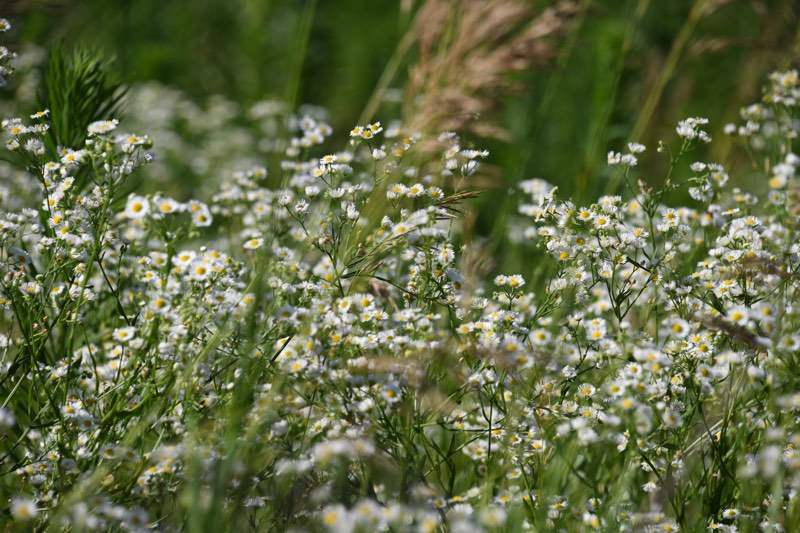
One thing is very important to mention – even though these types of wildflowers are much simpler to grow than the annuals, the perennials are not as striking or aesthetically pleasing. Although, I’m a big fan of Yarrow Flowers:)
This doesn’t mean they are not beautiful. However, they will make for a gorgeous backdrop in your garden rather than the centerpiece.
How to Grow Wildflowers in Your Garden
Once you get invested in these superb flowers, you won’t believe how easy they are to plant and grow.
Seeing as they are native to your region, they will require almost no effort on your part to thrive. In fact, it’s so easy, that you can even plant them in autumn and winter.
Growing Wildflowers from Seed
The first thing you need to know is that you have two options. You can grow wildflowers from seed or from seed balls.
The latter is a simpler version that just requires you to add water and place the seed balls in a sunny spot and watch how your flowers grow.
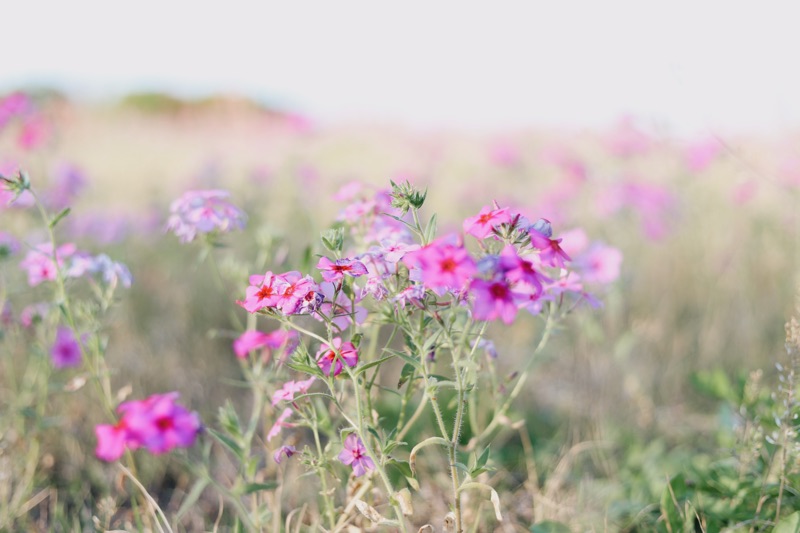
However, if you’re determined to plant wildflowers from seed, here are the steps you need to follow.
1. Find a sunny spot
This step is crucial when it comes to growing wildflowers!
Remember that wildflowers grow in fields when in nature. Therefore, they need as much sunlight as possible. You need to offer them as much as 5 or 6 hours of direct sunlight every single day. If you can do more, even better.
As a result, you might want to plant them away from the side of the house and more toward the middle of the garden.
- Choose the best wildflowers for you
As a rule of (green) thumb, you should choose flowers that are native to your region.
This means they are already used to the climate and soil you have in your garden. Of course, you can go for imported ones, but they might be a little trickier to grow in your garden.
Choose seeds that are organic, non-GMO, and that do not contain neonicotinoids. This is especially important if you’re planning on growing edible wildflowers which you will later use for teas, infusions, cooking, and baking.
High-quality wildflower seeds should be a priority!
- Choose the best time for planting
As mentioned earlier, wildflowers can be planted all year round. However, that’s the general rule. When you actually get down to business, you have to take a look at each flower in particular. We will be detailing that below in the section dedicated to the best types of wildflowers.
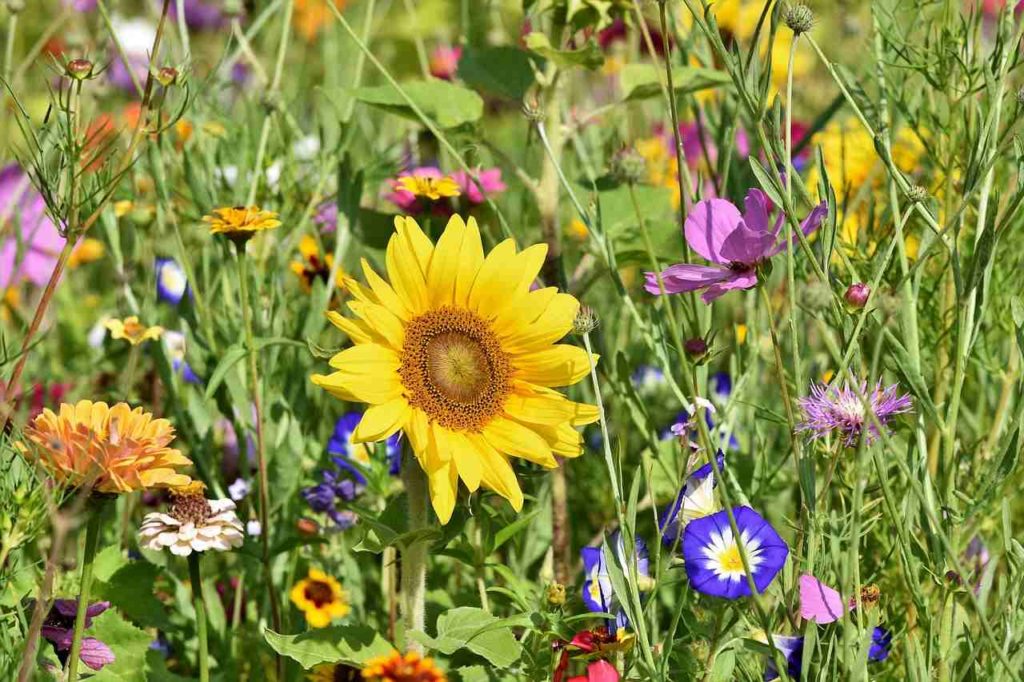
As a rule, plant wildflowers in early spring or late fall. The idea behind this schedule is to avoid the first and last frost by a margin of 10 weeks. In this way, the seeds will have time to settle and not freeze.
However, once again, each plant is different. So it depends on what you have chosen for your garden.
- Prepare the soil
Remove all the weeds and grass from the area you are planning on planting the wildflowers in.
Use a shovel, rake, or a garden hoe if the space is small. If you have a large backyard, you can use heavy machinery that will also loosen the soil.
- Plant the seeds
This will also depend heavily on the type of wildflowers you have chosen for your garden. You also have to decide if you want to plant each wildflower at a time or a mixture of them. Most people go for the latter version simply because it looks better.
In that case, you will have to follow the instructions on the package of seeds very carefully.
- Water the area as much as you can!
When it comes to wildflowers, they need all the moisture they can get. So much so, that you will have to water your garden every single day and keep the soil wet constantly.
Keep up this process until you can see that the seeds have started to germinate. When the new baby plants have reached a height between four and six inches, you can reduce the watering down to once or twice a week, depending on the weather.
Wildflowers Care Is Incredibly Easy
As previously mentioned, one of the main reasons why people love growing wildflowers in their gardens is because they require so little care after they have been planted.
Here’s what you have to do:
- Water them as much as you can, especially during dry spells. Remember they depend on you!
- Weeding will be minimal as wildflowers grow in very dense patches that don’t really allow for weeds to penetrate their rows. As a result, you won’t have a lot of manual labor to do.
- Mow you entire garden every late fall. Do it when the annuals are in seed and your perennials are dormant. Cut them all down to about six inches. This will make the seed heads drop and ensure your garden will grow back in a neat and tidy way.
What Types of Edible Wildflowers Can I Grow?
Wildflowers are not just beautiful blooms to be enjoyed from an aesthetic point of view. You can also eat them! You can make almost anything using wildflowers, from salads to teas, to cakes and cookies. Here are some of the best and most flavorful edible wildflowers you can grow.
Borage
The main thing you will love about borage is just how beautiful it is. The flower produces light blue, small blooms that are shaped like stars. The second best thing about them is that you can add them to your favorite salad because they are edible and they taste like cucumber!
You can also add borage blooms to a tall glass of lemonade or, why not, to a gin and tonic if you feel like relaxing in the garden after a hard day’s work. The drink will surely become Instagrammable thanks to the beautiful borage flowers!
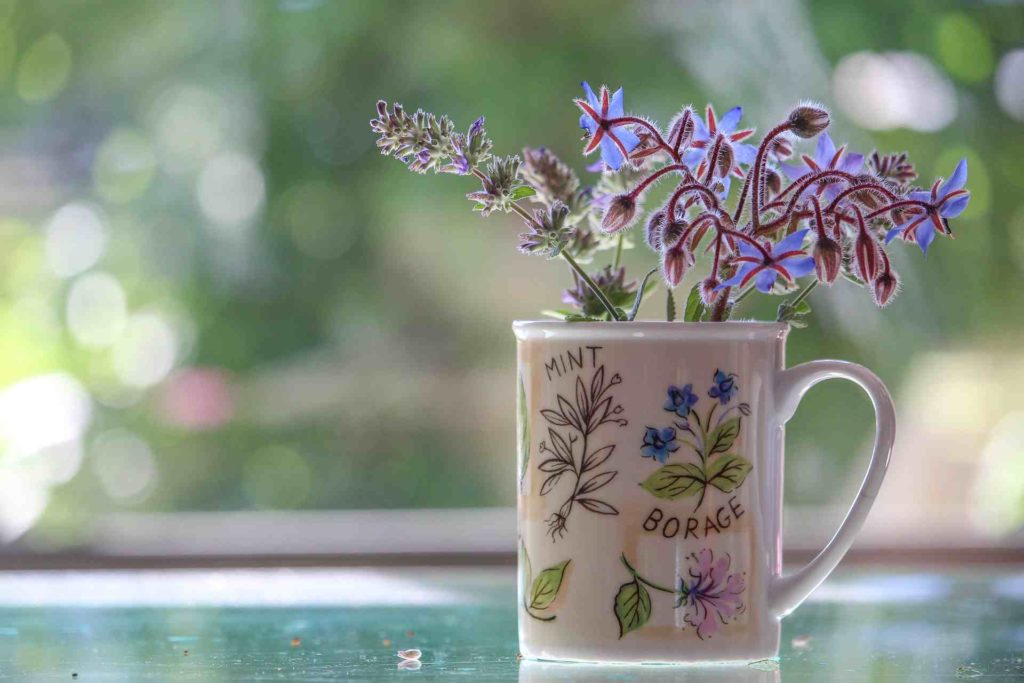
Chicory
Let’s stick to the blue aesthetic for a second longer. Especially if you’re interested in getting likes on your Insta. Here is the gorgeous chicory. These wildflowers are small and delicate, perfect for topping a gourmet salad.
The blossoms have frayed petals that make them look almost like a ballerina’s skirt, which you will love. Chicory tastes, well… like chicory. It has that distinct, slightly bitter taste that people have been in love with for so long.
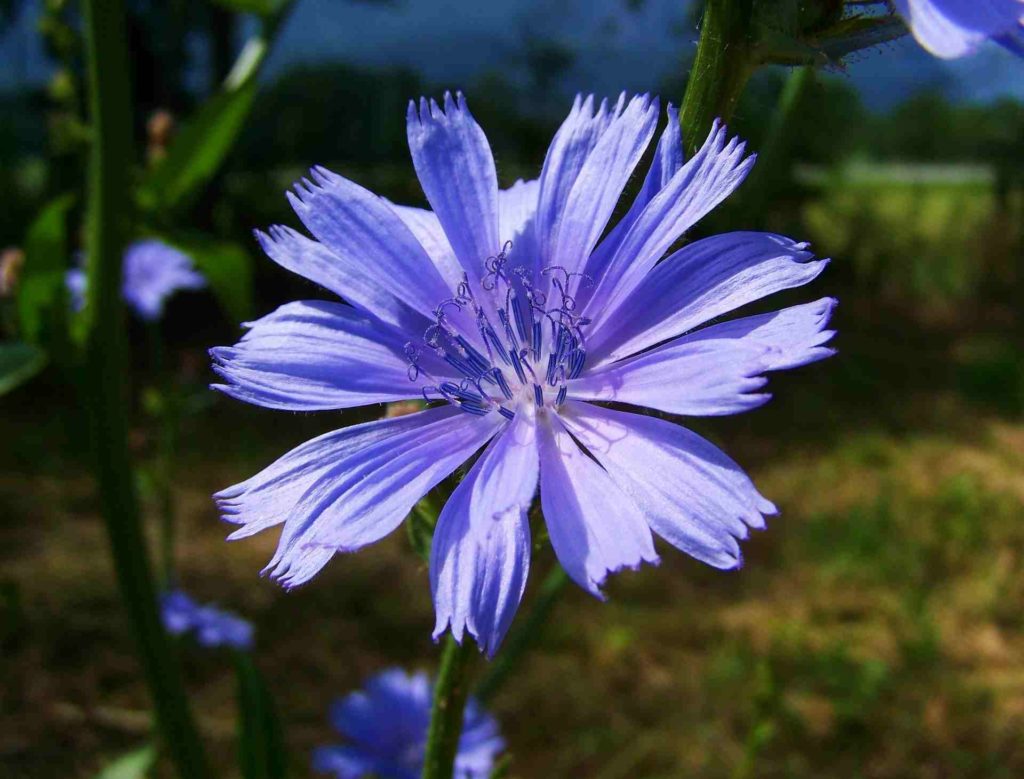
Hedge Garlic
You might be thinking that you already know what this tiny beauty tastes like. And while you would be correct, it has a twist.
The small, white flowers taste like garlic with a hint of mustard, which makes them all the better for your cooking. Or if you simply add a handful to a salad. Not to mention that the white flowers with a yellow core are simply too cute for words!
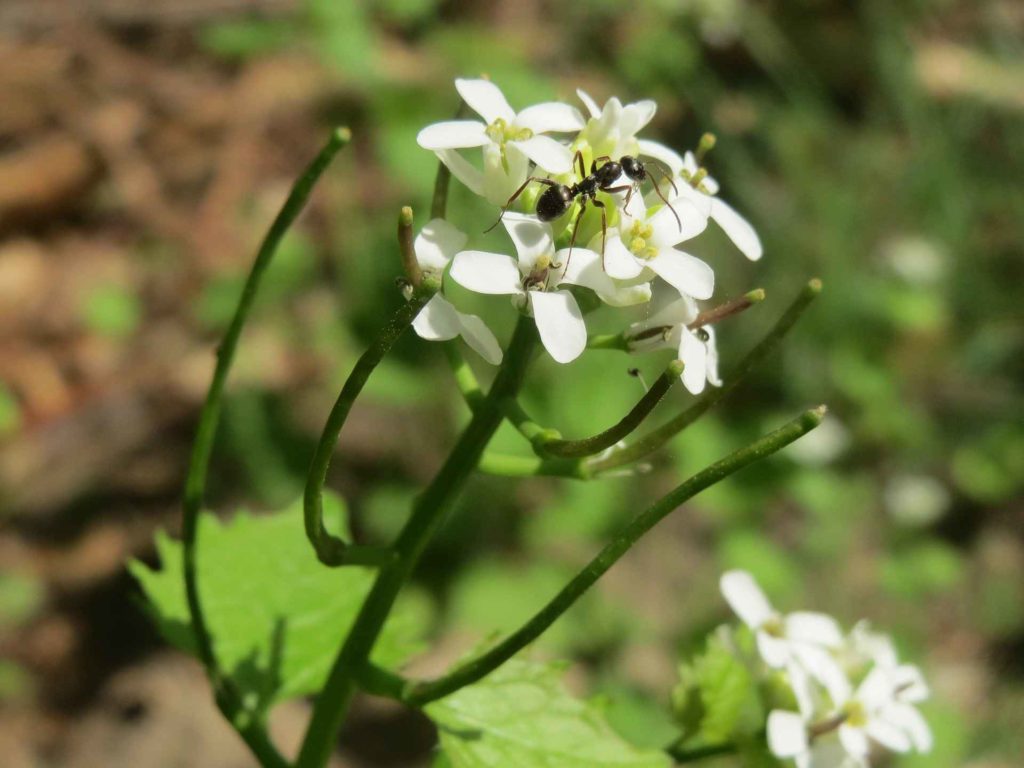
Wild marjoram
Talk about pretty! Wild marjoram is a feast for the eyes and taste buds alike. The plant grows large clumps of pastel pink blossoms that will look amazing in any garden.
As for the taste, wild marjoram is also known as Origanum vulgare. This means that its closest relative is common oregano, usually grown all over the Mediterranean. Wild marjoram tastes strongly of oregano and you can use it exactly as such!
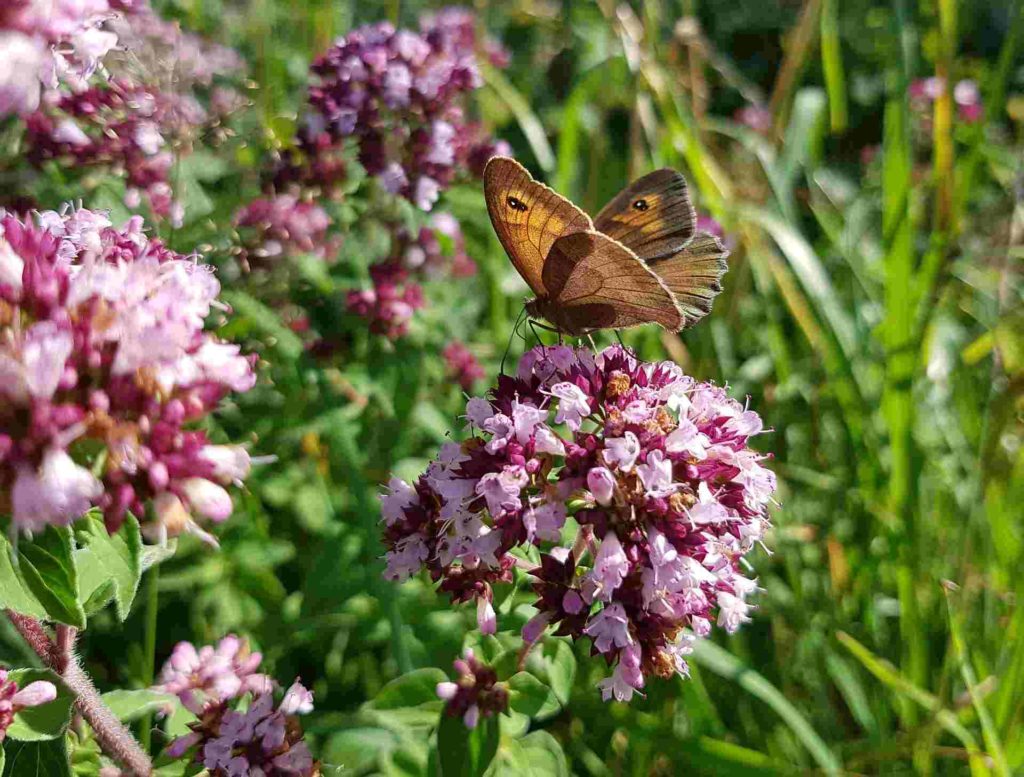
Wild Onion
Who could have ever believed that these incredibly beautiful wildflowers that look more like orchids are actually part of the onion family?
But you’d better believe it! The Nodding Wild Onion has a very strong onion flavor and smell when you bruise it. You can eat the entire plant as is if you want to add it to a salad.
However, you might find the flavor a little too strong. Therefore, you can try cooking it to make it milder.
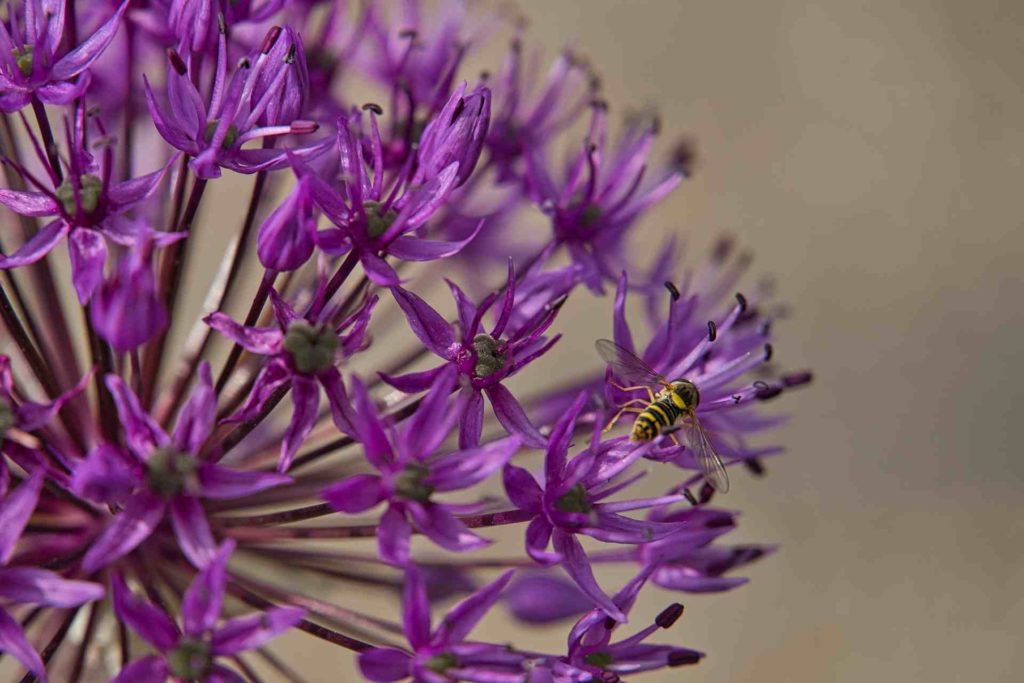
Evening Primrose
This is yet another type of wildflower that you can eat whole. Save the seeds because you can use them exactly like you use poppy seeds for cakes and sponges.
Use the small, yellow flowers in salads, for lemonades, or for decorating cakes. At the same time, you can cook the leaves or eat them raw. Primroses taste sweet when fresh and a little like caramel when baked.
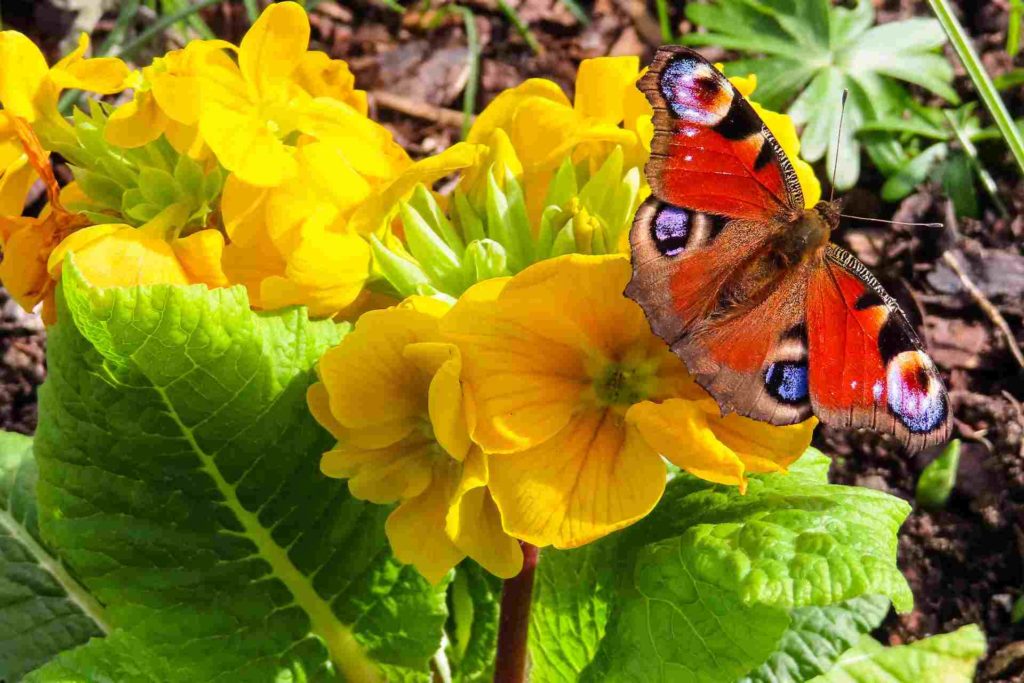
What Are the Benefits of Wildflowers?
The number one advantage that wildflowers bring to the table is the fact that they are fantastic for the environment.
Wildflowers are pollinator plants. This means they support bees (whether they live on the ground, trees, or bees houses). And we all know that bee populations have been rapidly declining in the past years.
Cultivated plants usually do not produce nectar or pollen. At the same time, since people grow them for aesthetic purposes, they have too many petals and don’t allow bees inside anyway. As opposed to that, wildflowers are the solution to an eco-friendly garden for both bees and birds.
Another great advantage when growing wildflowers is that you will be supporting your local flora. Needless to say, when cultivating other types of plants, they most likely did not originate in your country.
Wildflowers, however, are native not only to your country but to your region. As a result, you can help deter bad gardening practices such as flying in expensive flowers from exotic countries.
The Best Types of Wildflowers for Your Garden
Needless to say, wildflowers come in the hundreds, if not the thousands all around the world. As mentioned in the beginning, they are literally flowers that grow in the wild, without any help.
So how do you go about in choosing the perfect ones for your garden? The best thing to do is to select the ones that already grow in your area. Go for perennials instead of annuals if you’re a beginner, and, when it comes to aesthetics, simply follow you heart!
Here are the a few types of wildflowers that are very easy to grow in any garden.
Snake’s head fritillary
Don’t worry, this has nothing to do with snakes! Snake’s head fritillary are a type of wildflowers that produce unique blossoms shaped like bells in beautiful purple and white patterns.
The reason why most gardeners go wild for these wildflowers, pun intended, is because the blooms have a checked pattern. If you look closely, you can see that they look like a chess board in purple and white.
Apart from that, Snake’s head fritillary are very hardy and won’t give you any trouble. You can grow them in your garden at large or in small containers if you want them a little closer to home.
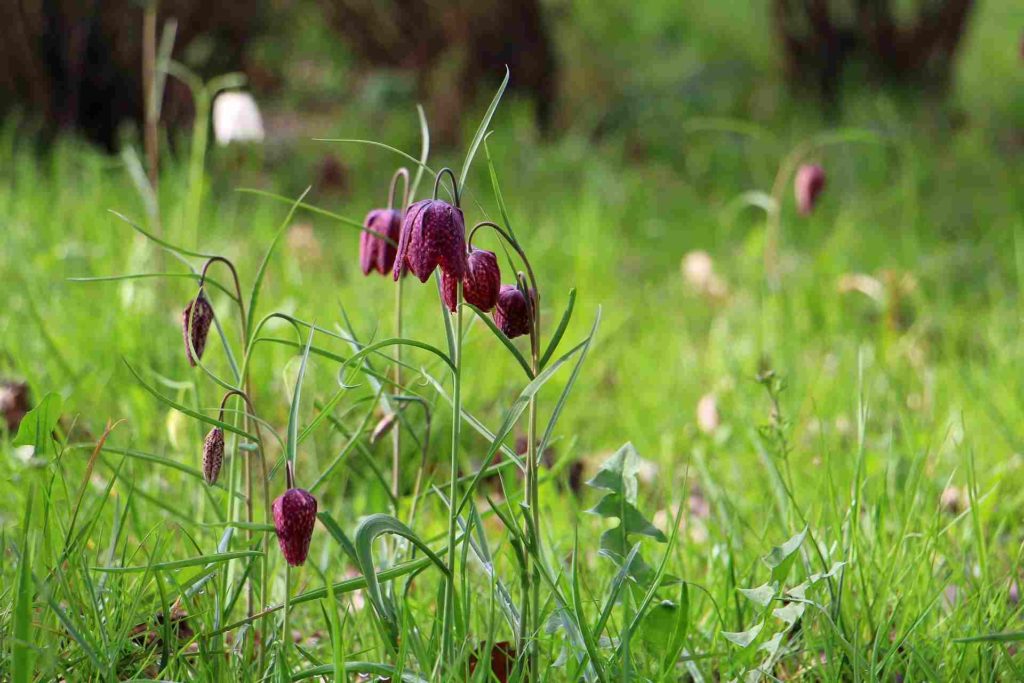
Lily of the valley
These fragrant beauties are wildly spread in gardens nowadays but did you know they are, in fact, wildflowers? Their name suggests as much – of the valley.
They produce tiny bell-shaped blooms that are completely white in color. But what will attract you most to Lily of the Valley will be the scent. These wildflowers give off an intoxicating scent that has been used for centuries in perfume making and the cosmetic industry.
Tip – lilies of the valley are very poisonous to humans, animals, and other flowers. If you plant them alongside other flowers, they will soon start to die.
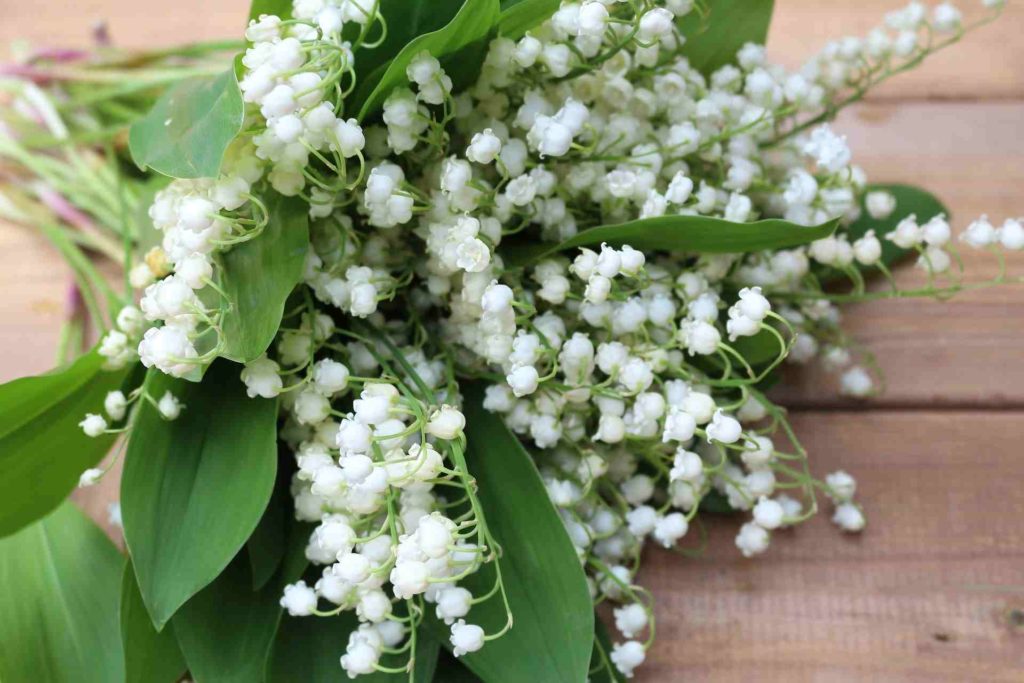
Honeysuckle
Speaking of flowers that have an intoxicating smell, honeysuckle has to be on your list. It gives off a warm and rich smell of honey and fruit mixed with some notes of citrus. It’s no wonder there are so many perfumes that use it as a note!
Honeysuckle produces yellow, pink, and white blooms that bear resemblance to some types of orchid. They make great pollinators for bumblebees and moths, which are attracted to the honeysuckle’s sweetness.
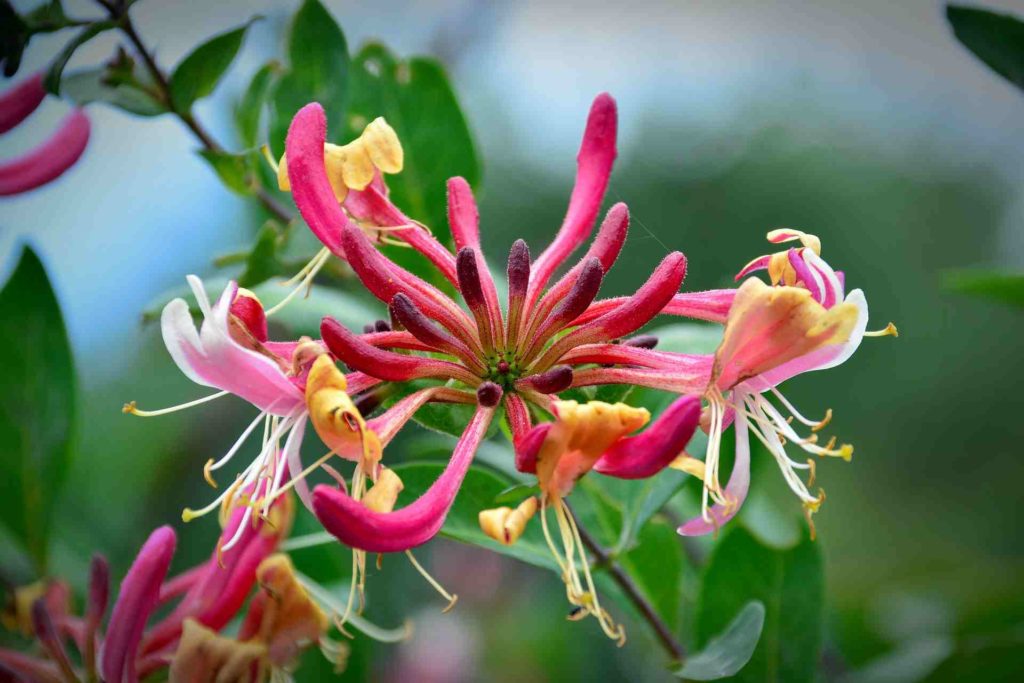
Water lilies
These wildflowers are perfect if you have a water garden or a pond. You should know that wild water lilies are valued just as much as cultivated ones, if not more. Not to mention that they attract small frogs that live on their leaves, making your pond look like a fairy tale!
One of the best things about these splendid aquatic wildflowers is that they don’t need any assistance to thrive. You will have to set up a sandy soil for them, after which, you’re done! Let them bask in the sunlight and warm your heart.
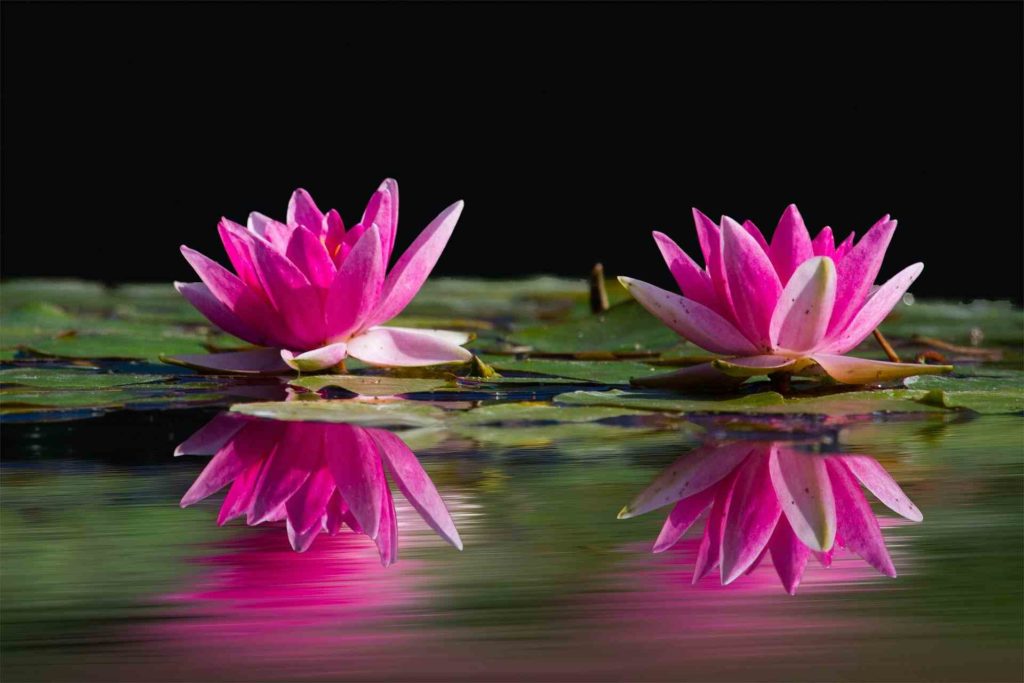
Sunflowers
The sunflower is, without a doubt, the queen of all wildflowers. Usually found in fields, the sunflower is extremely easy to grow. All it needs is a seed and the plant does the rest! Not to mention that this is an edible wildflower.
However, please be aware that sunflowers grow to be very tall. Therefore, in full bloom and height, you might find yourself having a forest of sunflowers rather than a garden! At the same time, they require as much sunlight as they can possibly get in order to thrive.
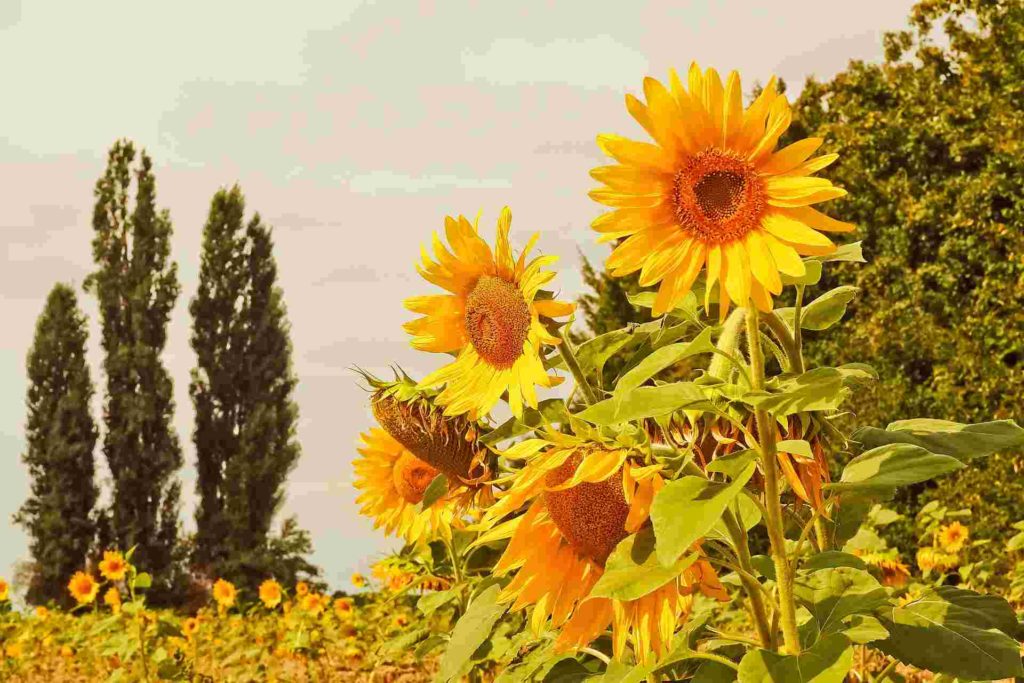
Wildflowers Meaning – What Do They Symbolize?
The language of flowers reached its height and popularity during the Victorian era in England. People gifted flowers to each other as a way to send messages without actually having to verbalize them.
Some of the fascinating meaning behind flowers remains to this day. Here is what your favorite wildflowers symbolize:
- Daisy – innocence, and hope
- Forget-me-not: never forget me
- Honeysuckle – the bond of love
- Lily of the valley – sweetness
- Red poppy – consolation
- Mint – virtue
- Lavender – devotion, and virtue
- Hyacinth – the constancy of love
Wildflowers – FAQs
If you’re new to the world of wildflowers, we know you have a lot of questions on your mind. So here is a round of FAQs to help you out!
Are lilies considered wildflowers?
This is a fair question, given how many types there are. But it’s mostly a confusion in terms.
Lilies per se are not considered to be wildflowers. However, lilies of the valley and water lilies are wildflowers. This means you can grow the latter in your garden.
Which willdfowers bloom first?
It depends on what you have planted. If you chose a pre-prepared mixture of seeds, it will most likely include some baby’s breath as well as flowers called ‘baby blue eyes.’ These are the wildflowers that tend to appear first.
However, if you plant each flower by hand on your own, then we suggest you try some snowdrops. These gorgeous little wildflowers that are commonly found in forests will be the first to arrive as early as February.
Can I cut wildflowers for flower arrangements?
That depends on the flowers themselves. Normally, wildflowers are perfect for this purpose because they are incredibly prolific. In other words, they are so abundant, you won’t even notice that some of them are gone.
However, that’s not the problem. Some of the flowers themselves might not be suitable for an arrangement. Red poppies, for example, will drop their petals roughly on the same day after you have cut them. This makes handling them extremely difficult.
Can I get seed from my wildflowers?
Yes, of course! Not only that, but you should! If you have a favorite type of flower among the many in your garden, allow it to dry completely and pick the seeds. Store them in a dry and cool place until next spring.
In this way, you will be able to plant more of your favorite wildflowers. Seeds from your garden also make great gifts for your friends!
Growing Your Own Garden of Wildflowers
From the classic anemone and primrose to the fairy tale water lily and the dangerous nightshade, wildflowers are the perfect choice for any gardener who wants an explosion of beauty but very little work.
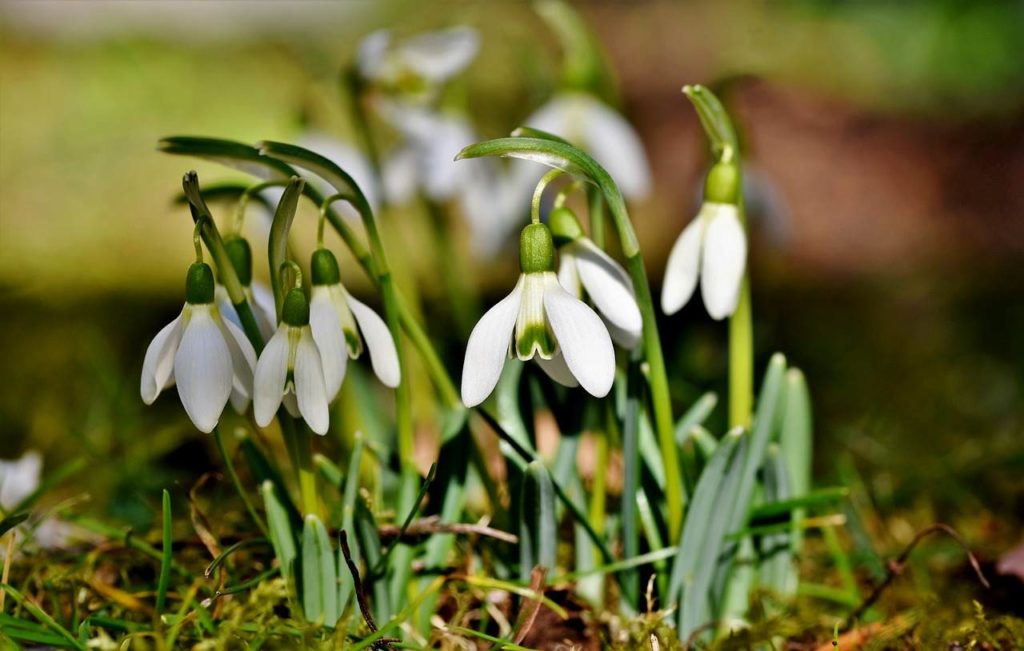
Wildflowers are low-maintenance, very friendly to the environment, and extremely easy to grow in almost any climate. Not to mention cheap. So, are you ready to start your wildflower garden this summer?

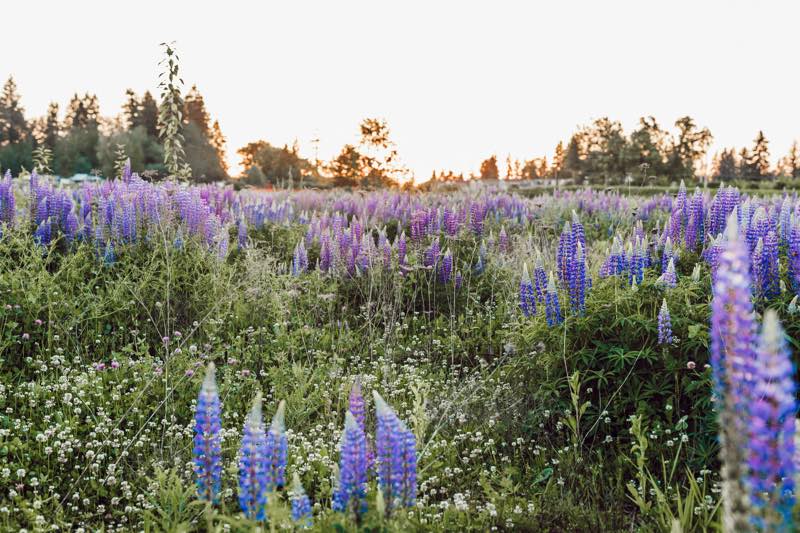
Leave a Reply